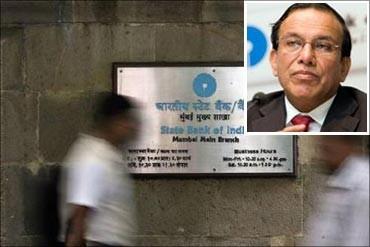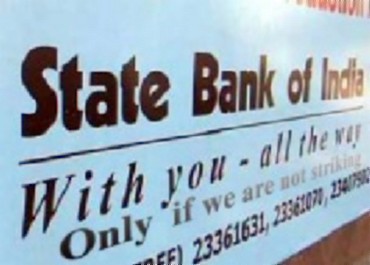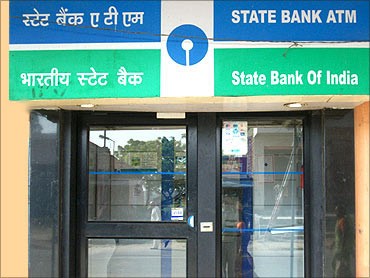
State Bank of India, the country's largest bank, has breached the Reserve Bank of India's credit exposure norms during three consecutive years with regard to its loans provided to Mukesh Ambani-led Reliance Industries.
The public sector lender, which also has significant exposures to troubled Air India besides certain telecom firms being probed in relation to the 2G scam, has now disclosed that its credit to RIL was in excess of the limits prescribed under the RBI's prudential credit norms.
Detailing the cases where it breached prudential limits for single-borrower exposure during the fiscal ended March 31, 2011, SBI has named RIL as also public sector majors Indian Oil and BHEL as three such borrowers in its annual report.
This is the third straight year when SBI has exceeded the single-borrower ceiling with regard to RIL, as per the bank's annual reports for the past three financial years.
. . .

However, the bank brought down its exposure to RIL within the limit on the last date of the previous fiscal, i.e. March 31, 2011, according to the SBI annual report.
The public sector lender had provided credit in excess of prudential norms to RIL during 2009-10 and 2008-09 also.
During the year 2009-10, the bank's credit exposure was in excess of prudential limits for Reliance Industries, Indian Oil Corp, BHEL and Tata Group.
Prior to that, SBI exceeded prudential credit limits during 2008-09 with regard to its exposure to RIL and IOC.
As per RBI guidelines, the exposure ceiling limits are 15 per cent of capital funds in case of a single borrower and 40 per cent of capital funds in the case of a borrower group.
. . .

However, the credit exposure to a single borrower can go up to 20 per cent, if the additional 5 per cent exposure is on account of extension of credit to infrastructure projects.
Similarly, the credit exposure to borrowers belonging to a group may go up to 50 per cent, if the additional 10 per cent exposure is for credit to infrastructure projects.
The bank's exposure to telecom companies recently came under criticism as some of these companies are facing probes in connection with the 2G scam involving alleged breach of regulations in allotment of licenses.
In an analyst conference after the bank's full-year results for 2010-11, SBI disclosed that its exposure to telecom companies was Rs 22,600 crore (Rs 226 billion) -- 3 per cent of its loan book -- while exposure to telecom companies under investigation was Rs 1,500 crore (Rs 15 billion).
. . .

Besides, its exposure to airline companies, including troubled Air India was Rs 4,500 crore (Rs 45 billion).
The bank also disclosed a total exposure of Rs 100,000 crore (Rs 1,000 billion) in the infrastructure sector, including Rs 30,000 crore (Rs 300 billion) to the power sector.
With regard to single-borrower exposure limit exceeded in 2010-11, SBI said in its annual report, that its credit to RIL breached the prudential ceiling on three occasions during the year -- between April and July 2010, from August to October 2010 and from November 2010 to February 2011.
Between April and July 2010, SBI's exposure to RIL was Rs 15,815.48 crore (Rs 158.155 billion), as against a ceiling of Rs 13,646.26 crore (Rs 136.463 billion), while the exposures exceeded the respective limits by well over Rs 1,000 crore (Rs 10 billion) on two other occasions also.
. . .

The outstanding exposure to RIL as on March 31, 2011 stood at Rs 5,645.44 crore (Rs 56.454 billion), which was within the limits.
For IOC and BHEL also, the credit exposure exceeded the ceiling on three occasions during 2010-11.
During the year 2009-10, the credit exposure exceeded the prudential ceilings on three occasions each for IOC, RIL and BHEL, while the exposure was in excess of the limit for Tata Group on two occasions.
For 2008-09 also, the credit exposure was in excess of the permitted level on three occasions for both RIL and IOC.